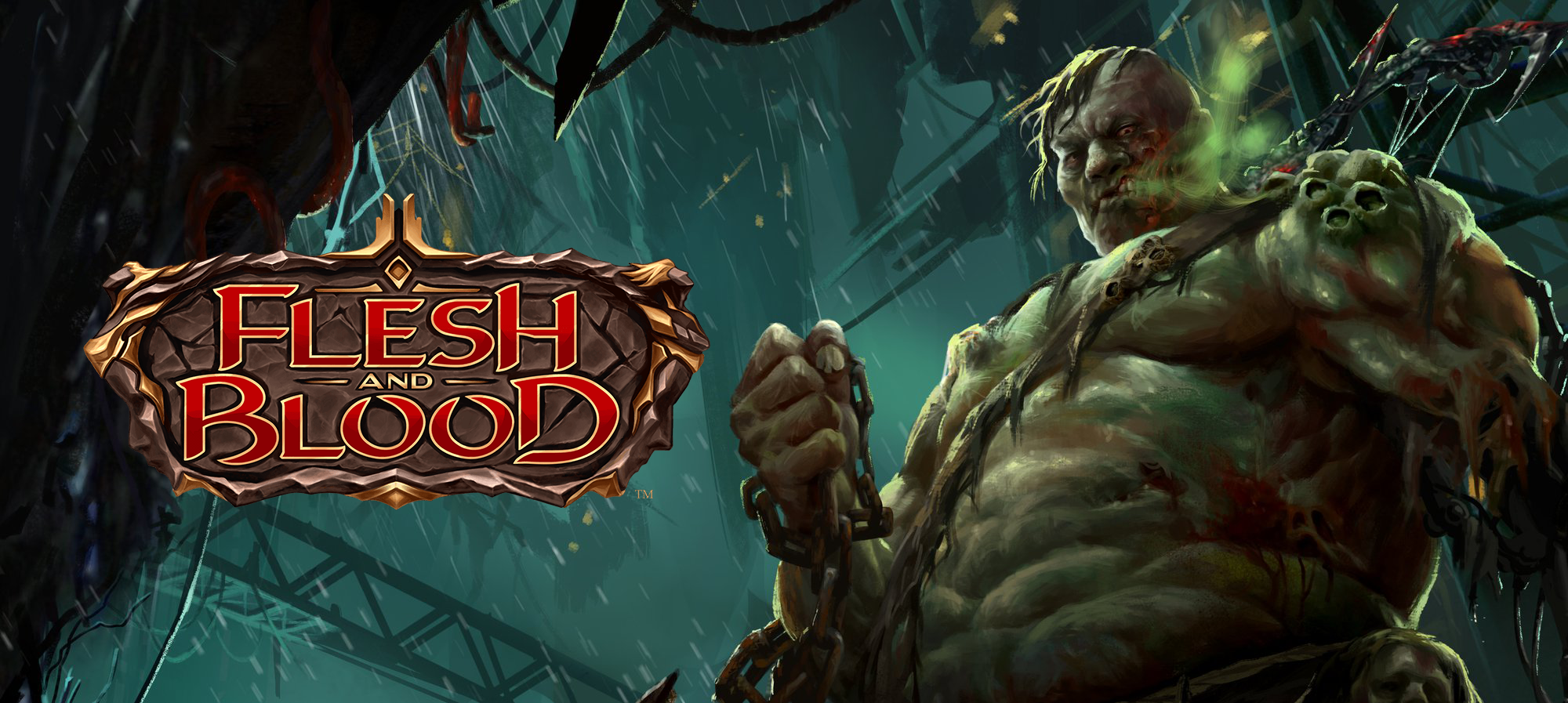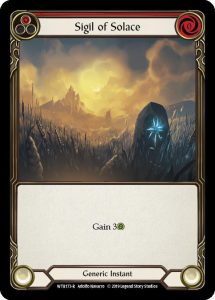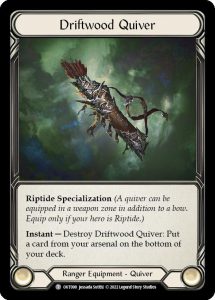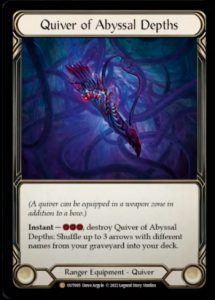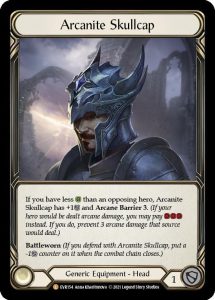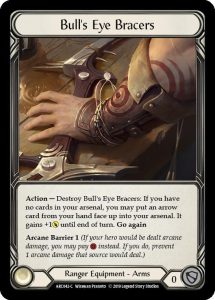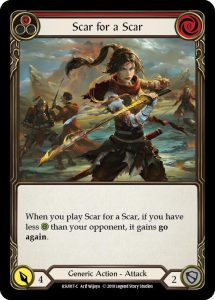(Riptide, Lurker of the Deep) | Art by Joseph Qiu)
If you're looking for more Flesh and Blood data and content, go check out our other sites, FABREC and Spellvoid!
Welcome to the first installment of Outsiders, a FABREC series that evaluates off-meta heroes and underutilized cards! We'll determine the reason for their outsider status, and try to find deck shells and use cases for them. Why? Because one of the core strengths of Flesh and Blood is its hero-driven gameplay, allowing players to bond to a character that they connect with.
And as the wheel of balance turns, with heroes leaving the game, new cards being added, and the meta ever-shifting, by sheer statistics at some point the underdog will have a glow-up – and then it’s the specialists’ time to shine! As is the case now with everyone’s favorite underdog Azalea, Ace in the Hole seemingly becoming the meta’s top dog after years of being drip-fed new Ranger cards that were at least partially aimed at powering up her deck specifically.
And just as Azalea finally has her time in the spotlight, Outsiders also introduces us to a new Ranger to replace Azalea at the bottom of meta tier lists everywhere: Riptide, Lurker of the Deep! But why is it that this chonky, trap-loving hero is almost universally disregarded by competitive players?
What Makes a Bad Hero?
One explanation for his outsider-status is the design of the hero. As we will see, Riptide’s design has some tension to it: every time we play a card from our hand, we get to put a card from our hand into our arsenal. And whenever a trap we control triggers, Riptide deals 1 damage to the attacking hero. Two abilities with vastly different applications! While the first one lends itself to a go-wide playstyle, allowing us to skip the Ranger tax on reloading our arrows, the second one favors a defensive, trap-focused game plan, pulling our deck into multiple directions from the get-go.
It is worth noting that in some cases, the first ability lets us reload traps on our opponents turn when playing instants – more on that later – but in general it means that there is some tension in our deck's game plan between going wide and turtling up, trading two card hands with our opponent. And in a competitive environment, especially at the start of a new set redefining the meta, the consensus is that proactive decks with clear, defined game plans tend to be where it’s at. Where Riptide, and the Ranger class in general, shine is when there is an established meta for them to build towards. You must know what traps to set and what arrows to bring to best corner your prey.
Turning the Drawback Into a Strength
So with that in mind, let’s take a look at the cards that people generally use in Riptide and try to find ways to improve on the established builds. First off, 80% of decks are using Trench of Sunken Treasure? I mean, it’s a cool card, seemingly made for Riptide with its ability to remove any old card from your arsenal, AND it features a cool pirate in the artwork. That's a great reason to include a card in your deck. But allowing us to turn a card in our arsenal into a single resource just isn’t very impactful!
Compare that to Fyendal’s Spring Tunic, the much more boring and less pirate-y choice, that just gives us that single resource every three turns at no cost! I think this discrepancy speaks to a big misunderstanding of the hero and the kind of deck he shines with. Riptide is best in a midrange shell: extending the game, finding favorable blocks, and returning solid one or two card hands.
Wasting a perfectly good card for a single resource just isn’t the kind of value a midrange deck is looking for. And un-bricking our arsenal is a use case that shouldn’t come up more than once a game – hey, there’s Riptide’s very own Driftwood Quiver that we can use for essentially no opportunity cost, just in case! Riptide is a smart shopper, and it’s a lack of efficiency that seems to be where most decks stumble.
Let’s look at some criminally underused Arrows. Less than 40% of people have chosen to include Barbed Undertow, and even less play Immobilizing Shot and Hemorrhage Bore! All of which are cards that really shine in Riptide – play a trap from hand, reload the arrow for free, and on your turn give it an aim counter with Riptide's signature bow, Barbed Castaway, and fire it. All off the back of a single yellow pitch.
Speaking of yellows, Riptide might just currently be the best hero at utilizing the much-maligned middle of the road pitch color. Similar to Flesh and Blood’s premier midrange deck, Bravo, Showstopper (I'll die on that hill), the pattern we want to get into is blocking with a handful of cards and then returning an efficient two-card hand while preserving our life total (and chipping down our opponent’s with trap triggers) to be able to tank some damage in return for a large hand.
The three new common arrows all come in at the ever-important break point of 4 attack with an on-hit at yellow, and the new yellow traps from Outsiders all block for three and serve as the pitch base for this style of deck – while giving us great tools to combat a variety of playstyles at essentially no opportunity cost! Only around 50% of players include Tarpit Trap and Boulder Trap, while even less (around 10%!) include Infecting Shot at red or yellow.
And while we’re on the topic of break points, Riptide is made to utilize the new powerhouse cards Virulent Touch and Death Touch, being able to negate their downsides of only being playable from arsenal for free – and loading up on even more strong one- or two-card hands. If you ever block with three cards, trigger one of your traps and swing in with a Death Touch off of your Tunic resource on your turn, you’ll never want to go back to playing any other hero.
To round out the main deck, here are some star cards that have absolutely overperformed for me in testing. Sigil of Solace does everything this deck wants to do. It lets us bluff traps from arsenal, reloads traps on our opponents turn to play around dominate (oh hi, Azalea!), and provides our own starting life total with a buffer to let us keep trading well into the late game.
Dead Eye is a yellow pitch that blocks for three and, with some timing, lets us utilize our Tunic resource to play a larger hand that threatens even more disruption! And Hornet's Sting, alongside the Traps from Crucible of War, which always trigger Riptide’s second ability, do a reasonable impression of Reckless Swing to finish out a match in the late game. But they provide great value pretty much any time you can trigger them. Tripwire Trap, Pitfall Trap, and Rockslide Trap all offer at least four or even five or six points of value, all the while chipping away at our opponent’s life total to start forcing blocks and reducing the risk of getting run over while on the defensive.
The Old One-Two
Here's the decklist:
Hero
Riptide, Lurker of the Deep
Weapons
1 Barbed Castaway
1 Driftwood Quiver
1 Quiver of Abyssal Depths
Equipment
1 Arcanite Skullcap
1 Fyendal's Spring Tunic
1 Hornet's Sting
1 Bull's Eye Bracers
1 Perch Grapplers
Main
3 Barbed Undertow (red)
3 Death Touch (red)
3 Falcon Wing (red)
3 Fletch a Red Tail (red)
2 Frailty Trap (red)
3 Heat Seeker (red)
3 Hemorrhage Bore (red)
3 Immobilizing Shot (red)
2 Inertia Trap (red)
3 Infecting Shot (red)
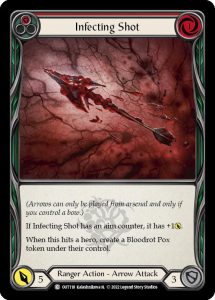
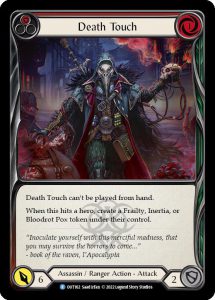
3 Lace with Bloodrot (red)
2 Melting Point (red)
2 Nimblism (red)
3 Ravenous Rabble (red)
3 Scar for a Scar (red)
3 Sigil of Solace (red)
3 Sink Below (red)
2 Tripwire Trap (red)
3 Virulent Touch (red)
3 Boulder Trap (yellow)
3 Dead Eye (yellow)
3 Infecting Shot (yellow)
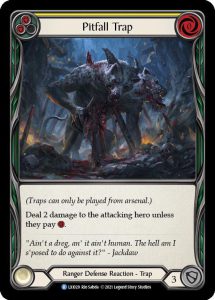
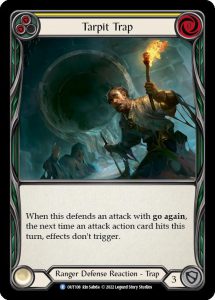
3 Pitfall Trap (yellow)
3 Tarpit Trap (yellow)
1 Buzzsaw Trap (blue)
1 Collapsing Trap (blue)
2 Rockslide Trap (blue)
1 Spike Pit Trap (blue)
Finishing Touches: The Sideboard
So now we have a clear main game plan. But what if our opponent doesn’t care about our on-hits, threatens to outvalue us, or is looking to take the game long to finish with a devastating combo? In that case, we have to turn to Riptide’s first ability. Loading up on 0-cost, non-arrow attacks with go again in the sideboard allows us to pivot our deck to one that favors large hands, while still working off of a yellow-heavy resource base.
This transformational style is where Riptide shines, turning his two slightly opposing hero abilities into a strength. We start from a core of solid two-card plays: Arrows with break points and strong on-hits, and ensuring that the rest of the main deck blocks for three, pitches for at least two resources, or ideally does both.
In our sideboard, we then include the tools to lay on the pressure in the matchups where a patient game plan favors our opponent: aggressive attacks with go again and buff cards like Melting Point and Nimblism to make our on-hits more threatening.
Our lower starting life total turns on Scar for a Scar by default, while our pitch base guarantees that Ravenous Rabble will rarely come in for less than three, and Falcon Wing can utilize our Tunic counter to become another 0-cost, 4 power attack with go again.
The sideboard is also where our more situational traps live. Frailty Trap comes in against go-wide decks, while Inertia Trap targets our fellow Rangers and Guardians, each adding to the disruption we can put out while still maintaining a semi-defensive posture.
We round out our sideboard by including two pieces of situational equipments. Bull's Eye Bracers is there to provide some amount of arcane barrier against the Runeblades and a free reload to close out a game, and Quiver of Abyssal Depths insulates us against Fatigue when playing defensive decks. Finally, three copies of Sink Below allow us to load up on more defensive options while still playing into that midrange, value-focused game plan of ensuring that every card trades on-rate or above.
As the meta evolves, the sideboard should be the focus of any aspiring Riptide player. As heroes fall out of favor and new decks eclipse old ones, the specific tools we need to target them will change – and this is probably where Riptide might, at some future point, become a serious contender.
Conclusion
I believe that the ideal way to think of Riptide is as a midrange style Ranger. But it's important to realize that piggybacking off of Bravo decks comes with some downsides. When you don’t have access to a weapon, this kind of deck runs the risk of running out of threats, while our generally less impressive armor options mean that we have fewer options to pivot turns by blocking out with equipment.
For the time being, Riptide probably remains a less popular hero for a reason. But if Outsiders has taught us anything, it’s that any hero, no matter how long they've gone without accruing any Living Legend points, will at some point have their time to shine. And when it’s Riptide’s turn, I am sure that he will do so by blocking two cards and returning two cards, outvaluing and grinding down his opponent until his traps finally finish them off.
For more data on Riptide, Lurker of the Deep, check out his page on FABREC.
Jonah Lara
Raised on a steady diet of fantasy storys and video games, Jonah discovered trading card games at the impressionable age of 12 and has since spent over half his life and about the same percentage of each monthly salary on card games. If he's not brewing new decks or catching up on the latest FaB news, he's probably dead - or painting a new Warhammer mini.
Your opinions are welcome. We love hearing what you think about Magic! We ask that you are always respectful when commenting. Please keep in mind how your comments could be interpreted by others. Personal attacks on our writers or other commenters will not be tolerated. Your comments may be removed if your language could be interpreted as aggressive or disrespectful. You may also be banned from writing further comments.
